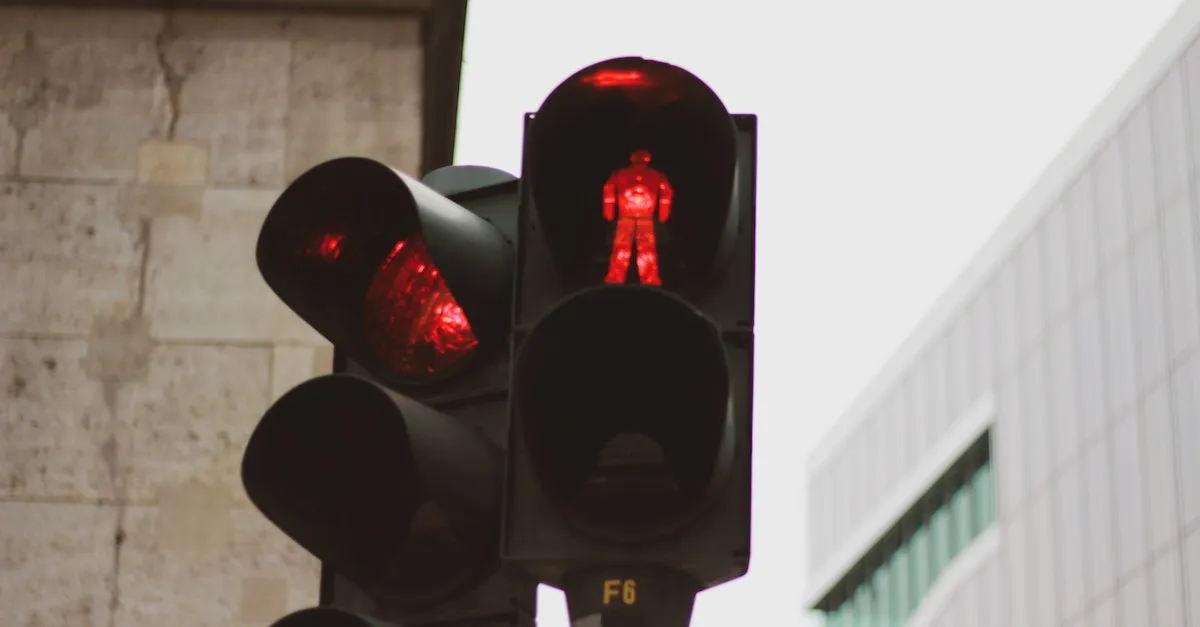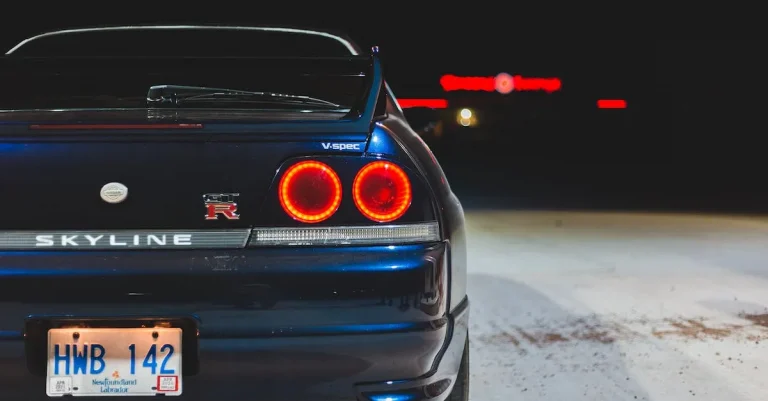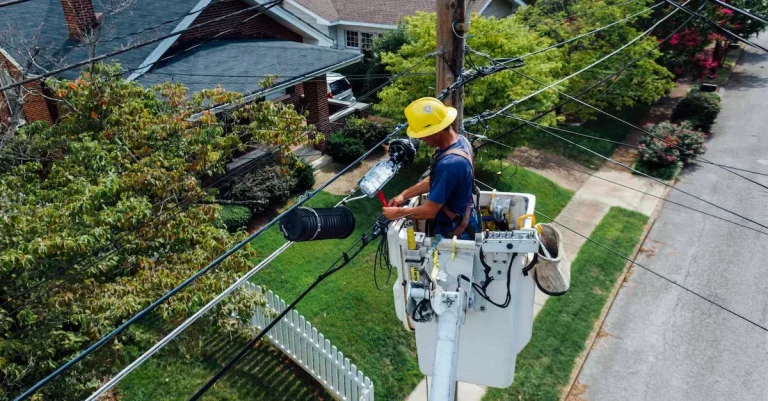Can You Turn Left On Red In California?
Turning right on a red light after coming to a complete stop is a common maneuver that’s legal across most of the United States. But does the same exception apply for left turns at red lights in the state of California?
If you’re short on time, here’s a quick answer to your question: No, turning left on red is illegal in California except in very rare circumstances.
In this comprehensive guide we’ll cover:
California’s Laws on Turning Left on Red
Left on Red is Prohibited
In California, it is generally prohibited to turn left on a red light. When approaching an intersection with a red traffic signal, drivers are required to come to a complete stop and wait for the light to turn green before making a left turn.
This law is in place to ensure the safety of all road users and to prevent accidents.
However, it’s important to note that this law may vary in different states, so it’s always a good idea to familiarize yourself with the specific traffic laws of the state you are driving in.
Exceptions at One-Way Streets
While making a left turn on red is generally prohibited, there is one exception to this rule in California. Drivers are allowed to make a left turn on a red light if both the street they are turning from and the street they are turning onto are one-way streets.
This exception is in place because the risk of a head-on collision is significantly reduced when both streets are one-way. However, it’s important to exercise caution and yield to any pedestrians or oncoming traffic before making the turn.
For more information on California’s traffic laws and regulations, you can visit the California Department of Motor Vehicles website.
Safety Reasons for the Left on Red Ban
Increased Risk of Accidents
One of the primary safety reasons for the ban on turning left on red in California is the increased risk of accidents. Turning left on red requires drivers to make a sharp turn across oncoming traffic, which can be dangerous, especially in busy intersections.
Research has shown that allowing left turns on red can lead to an increase in side-impact collisions, also known as T-bone accidents, which can result in serious injuries or even fatalities. To reduce the risk of these accidents, California law prohibits turning left on red unless specifically allowed by a traffic signal or sign.
Potential for Pedestrian Collisions
Another important safety consideration is the potential for pedestrian collisions. Allowing left turns on red can create confusion and increase the likelihood of drivers not noticing pedestrians crossing the intersection.
Pedestrians may have the right of way during a green light, but when drivers are allowed to turn left on red, there is a higher chance of accidents involving pedestrians. By banning left turns on red, California aims to prioritize pedestrian safety and reduce the risk of collisions.
According to the California Department of Motor Vehicles, drivers must obey traffic signals and signs, including those that prohibit left turns on red. Violating this rule can result in a traffic citation and a fine.
It is always best to prioritize safety and follow the rules of the road to protect yourself and others.
Penalties for Illegal Left Turns
When it comes to making left turns on red in California, it’s important to understand the potential penalties for doing so illegally. Violating the rules of the road can result in traffic fines and license point violations, both of which can have serious consequences.
Traffic Fines
Illegal left turns on red can lead to hefty fines in California. The specific fine amount may vary depending on the jurisdiction, but it’s not uncommon for fines to range from $100 to $500. These fines can put a dent in your wallet and serve as a reminder to always follow the proper traffic laws.
License Point Violations
In addition to traffic fines, making an illegal left turn on red can also result in license point violations. In California, the Department of Motor Vehicles (DMV) assigns points for certain traffic violations, including illegal left turns.
Accumulating too many points within a specified time period can lead to the suspension or revocation of your driver’s license.
It’s worth noting that the number of points assigned for an illegal left turn can vary depending on the circumstances. Generally, a single illegal left turn on red may result in one or two points added to your driving record.
However, if the violation leads to an accident or poses a significant risk to other drivers, the consequences may be more severe.
It’s important to be aware that these penalties can have long-lasting effects on your driving record and insurance premiums. Additionally, repeat offenses can result in even more severe penalties, including increased fines and longer license suspensions.
To avoid these penalties, it’s crucial to familiarize yourself with the traffic laws in your area and always follow them. Remember, it’s better to wait for a green light than to risk the consequences of making an illegal left turn on red.
Allowances for U-Turns Instead of Left Turns
Using Legal U-Turns as an Alternative
In California, where left turns on red are not allowed, drivers have the option to make a legal U-turn instead. U-turns can be a convenient alternative to making a left turn at an intersection, especially during busy traffic hours.
By making a U-turn, drivers can effectively change direction and reach their destination without having to wait for a green left turn arrow or a break in oncoming traffic.
It’s important to note that not all intersections allow U-turns. Some intersections may have signs explicitly prohibiting U-turns, so it’s crucial for drivers to pay attention to these signs to avoid any potential traffic violations.
Additionally, it’s important to exercise caution when making a U-turn, as it requires crossing multiple lanes of traffic.
Drivers should look for designated U-turn lanes or intersections with sufficient visibility to ensure a safe maneuver. Before making a U-turn, drivers should always signal their intention, check for oncoming traffic from both directions, and yield to any pedestrians or cyclists.
By following these guidelines, drivers can safely utilize U-turns as an alternative to left turns on red in California.
Safely Navigating U-Turns
When making a U-turn, it’s crucial to prioritize safety and follow the rules of the road. Here are some tips for safely navigating U-turns:
- Choose the right location: Look for intersections or areas where U-turns are allowed and safe to perform. Avoid making U-turns in areas with heavy traffic or limited visibility.
- Signal your intention: Use your turn signal to indicate your intention to make a U-turn. This will alert other drivers and help prevent accidents.
- Check for oncoming traffic: Before making a U-turn, carefully scan for any oncoming traffic from both directions. Yield to oncoming vehicles and wait for a safe gap to make your maneuver.
- Watch for pedestrians and cyclists: Always be aware of pedestrians and cyclists who may be crossing the road or using the designated crosswalks. Yield to them and give them the right of way.
- Execute the turn smoothly: When making the U-turn, do so in a smooth and controlled manner. Make sure to check your blind spots and use your mirrors to ensure there are no vehicles or obstacles in your path.
Remember, it’s essential to drive responsibly and adhere to traffic laws to maintain the safety of yourself and others on the road. If you’re unsure about the regulations regarding U-turns in your area, consult your state’s Department of Motor Vehicles website for more information.
Other Exceptions Similar to Left on Red
Left After Stopping at Red Arrow
In addition to the left turn on red rule, there is another exception that allows drivers to make a left turn after stopping at a red arrow. While most red arrows indicate that turning in that direction is prohibited, there are certain situations where making a left turn on red after stopping is allowed.
According to the California Vehicle Code, drivers are allowed to make a left turn at a red arrow if they come to a complete stop and yield to oncoming traffic and pedestrians. It is important to note that this exception only applies when there is no sign specifically prohibiting the turn.
This exception provides flexibility for drivers in certain situations where the traffic flow and safety conditions allow for a safe left turn on red.
One-Way to One-Way Left on Red
Another exception to the left turn on red rule in California is the allowance for a left turn on red from a one-way street to another one-way street. This means that if you are on a one-way street and there is no sign prohibiting the turn, you can make a left turn on red after coming to a complete stop and yielding to oncoming traffic and pedestrians.
This exception is similar to the general left turn on red rule but is limited to one-way streets. It is important to always exercise caution and be aware of any signs or signals that may prohibit the turn.
Understanding these exceptions to the left turn on red rule can be helpful for drivers navigating the roads in California. Remember to always prioritize safety and follow the rules of the road. If you have any doubts or questions about specific situations, it is recommended to consult the California Vehicle Code or seek guidance from local authorities.
Conclusion
Due to safety concerns, motorists in California cannot turn left on a red light unless explicitly posted otherwise. Understanding the few exceptions and being patient by waiting for the green can help drivers avoid traffic citations and possible accidents from illegal turns.








